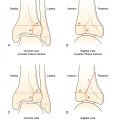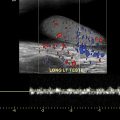Case presentation
A 6-year-old male with no significant medical history presents with headaches for the past 2 weeks. The headache is described as diffuse and, while occurring throughout the day, seems to be worse at night, at times waking him from sleep. He has also had daily first morning nonbilious, nonbloody emesis for the past week. There is no complaint of abdominal pain and there has been no fever or diarrhea. He does not appear to have vision changes and the parents report no difficulty ambulating or problems with balance. There is a strong family history of migraines in both his mother and older sisters. The child was seen by his primary care provider a few days after the headaches began and probable migraines were diagnosed. Oral magnesium was prescribed and his mother was asked to keep a headache diary and to give ibuprofen if acetaminophen was not helping. The mother has complied with these instructions. The ibuprofen and acetaminophen initially provided some relief but now do not seem to be helping. There is no recent travel and no other family members the child lives with have concurrent headaches.
The child’s physical examination reveals no fever, a heart rate of 83 beats per minute, respiratory rate of 24 breaths per minute, and blood pressure of 103/69 mm Hg. He does not appear ill but does complain of headache. He is normocephalic and there are no signs of trauma. His pupils are equal and reactive; there is no photophobia and no nystagmus. He ambulates without difficulty and has equal tone and strength throughout. There are no rashes or skin lesions.
Imaging considerations
In an acute setting, the common causes of pediatric headache include viral illness and migraine. The decision to obtain imaging in the pediatric patient with headache is based on history and physical examination findings. Most headaches in the pediatric population are not due to intracranial pathology. Over 90% of children who have an intracranial mass will have other historic or physical examination findings. Historic “red flags” include progressively worsening headache, waking in the middle of the night with a headache, complaints of morning headache upon awakening, morning emesis upon waking, duration of symptoms less than 6 months, and lack of a family history of migraine. Physical examination “red flags” include focal neurologic findings, worsening headache with Valsalva maneuver, and gait/balance disturbances. Children with these findings should be considered for neuroimaging.
Plain radiography
Plain radiography does not have a role in the evaluation of the pediatric patient with headache.
Computed tomography (CT)
CT is often used as a first-line imaging modality to detect intracranial pathology. This modality is readily available in most urgent and emergent settings. If an intracranial mass is suspected, a non—contrast study can be utilized.
Magnetic resonance imaging (MRI)
This imaging modality is the preferred method to visualize intracranial pathology, including brain tumors, and is often obtained following the detection of a brain mass on CT. Conventional MRI techniques can provide anatomic information regarding the dimensions and location of a brain tumor; advanced MRI imaging techniques, such as diffusion weighted imaging, functional MRI, and diffusion tensor imaging, can be utilized to provide physiologic information regarding hemodynamics and cellularity. Barriers to MRI use include the time necessary to complete a study and lack of immediate availability in many cases. In young children, sedation is often required to complete the study.
Imaging findings
The child had non–contrast-enhanced CT of his brain. There is a large, relatively homogeneous hyperdense mass centered in the fourth ventricle measuring 3.4 × 3.9 × 3.5 cm without significant internal calcifications. The mass is completely obstructing the fourth ventricle, with moderate to severe dilatation of the lateral and third ventricles (hydrocephalus) ( Figs. 28.1–28.3 ).



Case conclusion
Given the imaging findings, Pediatric Neurosurgery was consulted. Therapy with intravenous dexamethasone (0.6 mg/kg/dose every 6 hours) was initiated and the child was admitted to the pediatric intensive care unit. The next day, the child underwent MRI of his brain and entire spine. The mass was again visualized ( Fig. 28.4 ). The spine images revealed leptomeningeal spread ( Fig. 28.5 ). Several days later, the child underwent suboccipital craniotomy for resection of the fourth ventricular tumor with microscopic dissection and insertion of an external ventricular drain. A selected image of the postoperative MRI is provided ( Fig. 28.6 ). The patient tolerated the procedure well. Pediatric Oncology was consulted and an appropriate chemotherapy and radiation therapy regimen was instituted.











